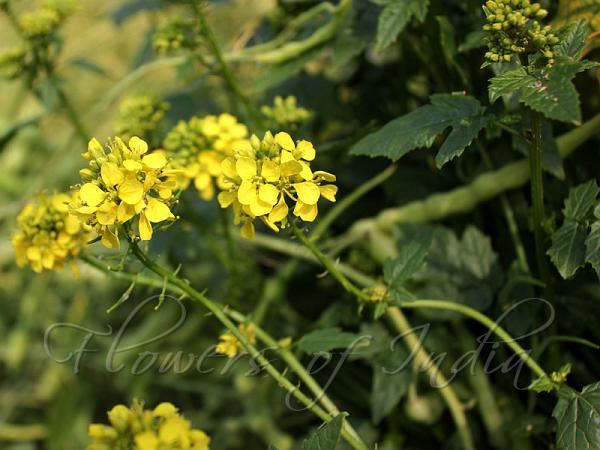|
| White Mustard |
|

|

| File size | 143573 |
| Original date | 2/28/14 11:20 AM |
| Resolution | 800 x 600 |
| Flash | Flash did not fire, auto |
| Focal length | 25.0mm |
| Exposure time | 1/640s |
| Aperture | 4.0 |
| Focus Distance | |
| Metering Mode | Multi-segment |
| Camera make | Canon |
| Camera model | Canon EOS 550D |
| Sensor type |
|
|
|
|
Photo: |
Botanical name: Sinapis alba Family: Brassicaceae (Mustard family)
Synonyms: Brassica foliosa, Brassica alba, Sinapis foliosa
Synonyms: Brassica foliosa, Brassica alba, Sinapis foliosa
White mustard is an annual plant Grown for its
seeds, mustard, as fodder crop or as a green manure, it is now
widespread worldwide, although it probably originated in the
Mediterranean region. The plant is 1-2 ft tall. Stem is branched,
bristly, usually clearly coarsely hairy. Flowers are yellow, about 1.5
cm across, petals four, 7-10 mm long. Sepals are 4, spreading. Stamens
are 6, of which 4 long and 2 short. Gynoecium fused, a single carpel.
Leaves are alternate, stalked. Blade is coarsely hairy, irregularly
pinnately lobed, terminal leaflet large. Uppermost stem leaves clearly
lobed. Fruit is many-seeded, densely stiff-haired, 3-veined, 2-4 cm
long siliqua terminated by a flat, slightly curved, seedless beak the
same length as the other siliqua. White mustard seeds are hard round
seeds, usually around 1 to 1.5 mm in diameter, with a color ranging
from beige or yellow to light brown. They can be used whole for
pickling or toasted for use in dishes. When ground and mixed with other
ingredients, a paste or more standard condiment can be produced.
The seeds contain sinalbin, which is a thioglycoside responsible for
their pungent taste. White mustard has fewer volatile oils and the
flavor is
| Identification credit: Gurcharan Singh | Photographed in IARI PUSA, New Delhi. |
• Is this flower misidentified? If yes,